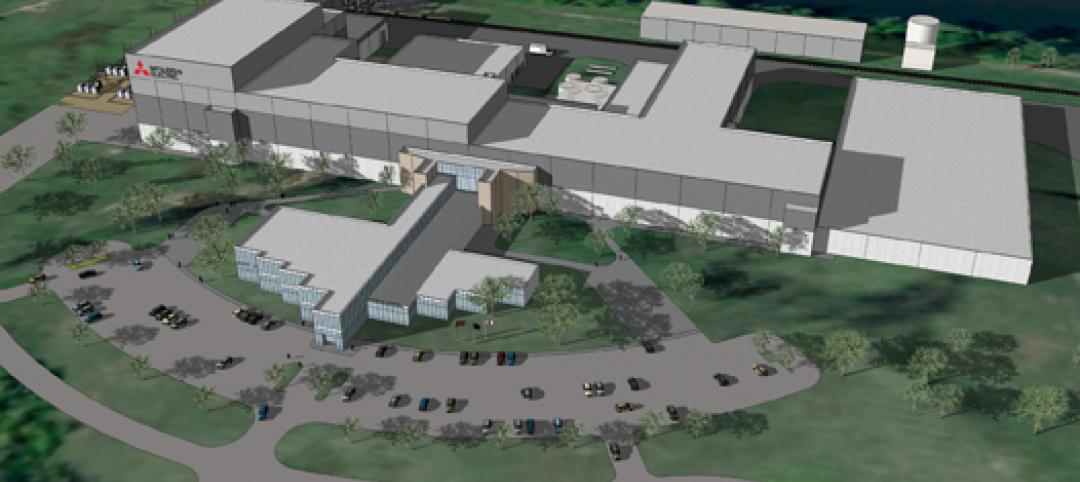When most people think of radiant heat or hydronic snowmelt, the usual applications are warm floors, heated sidewalks and snow-free driveways. Viega Radiant Design Services in Nashua, NH, has designed and quoted thousands of projects like those, but occasionally they receive requests for assistance with out-of-the-box projects.
The Big Bear Area Regional Wastewater Agency (BBARWA) in Big Bear, CA, contacted Viega Radiant Design Services with a project that needed an innovative solution. A byproduct of the water treatment process is sludge, composed of 25% solids and 75% water. Since the sludge must be hauled by truck to an off-site disposal area, BBARWA needed a way to reduce the water content and weight of the sludge, making it less expensive to haul. BBARWA tried several different methods to dry the sludge with only marginal success, so they decided to devise a new system that would be more effective, more efficient and would reduce the odor complaints.
Viega Radiant Design Services worked on the specifics of the slab heating system design, focusing on what would be required to generate enough heat from the slab to meet the sludge-drying objectives. Viega design engineers used finite element analysis (FEA) to determine the optimum tubing size, spacing and install-depth in the slab based on the water temperature supplied from the diesel generator’s exhaust. Due to the shape and size of the 315- by 60-foot heated slab, it was clear that this project was an excellent application for Viega’s revolutionary Viega Climate Mat® system.
Since the facility produces its own electricity using three natural gas generators, the water flowing through the slab would be heated with a heat exchanger in one of the generator’s exhaust, making it an efficient co-generation system. Within the first year alone, the new system saved approximately $200,000 in transportation and fuel costs.
Viega Climate Mat® system
The contractors were impressed with the speed and ease of installation of the Viega Climate Mat and appreciated the support provided by Viega throughout the entire process, from design to installation.
“Anything you said you could do, you did it,” said Plant Manager Fred Uhler. “They were topnotch guys from the sales staff, to the design support. They were excited about the project. It’s great to work with people like that.”
Once the covered drying bed building was completed, the system went into operation in June 2014. Within a few months, it became clear that this unique application of radiant heating was a resounding success. In 2015, Uhler reported that the system was performing beyond expectations and even better in the low-humidity winter months.
“This system is self-operational, and I’ve had zero maintenance issues with it from Viega’s side of things,” Uhler said. “It couldn’t be any better.”
Additionally, the project received the California Water Association Desert Mountain Award for Innovation.
While conventional radiant heating and snow melting projects are everyday business for the Viega team, projects like the Big Bear Area Regional Wastewater Agency covered drying bed are prime examples of how Viega can design and deliver innovative solutions that improve lives, reduce energy usage and help protect the environment.
For more information on Viega system solutions, visit Viega.us.
Viega
800.976.9819
insidesales@viega.us
www.viega.us
Related Stories
| Apr 12, 2011
Mitsubishi commissions electric power manufacturing plant in Memphis
Greenville, S.C.-based design and construction firm O’Neal Inc. is providing design, engineering, procurement, and construction services for Mitsubishi Electric Power Products.
| Feb 23, 2011
Data center trends: green design, technology upgrades
While green data centers will continue to be a trend within the industry, technology is also driving infrastructure upgrades that have never been seen before, according to the 2011 Data Center Technical Market Report from Environmental Systems Design. The report also includes an overview of the national data center market, construction costs, blackouts and disaster prevention, and site selection.
| Jan 4, 2011
Grubb & Ellis predicts commercial real estate recovery
Grubb & Ellis Company, a leading real estate services and investment firm, released its 2011 Real Estate Forecast, which foresees the start of a slow recovery in the leasing market for all property types in the coming year.
| Nov 29, 2010
Data Centers: Keeping Energy, Security in Check
Power consumption for data centers doubled from 2000 and 2006, and it is anticipated to double again by 2011, making these mission-critical facilities the nation’s largest commercial user of electric power. Major technology companies, notably Hewlett-Packard, Cisco Systems, and International Business Machines, are investing heavily in new data centers. HP, which acquired technology services provider EDS in 2008, announced in June that it would be closing many of its older data centers and would be building new, more highly optimized centers around the world.
| Nov 3, 2010
Public works complex gets eco-friendly addition
The renovation and expansion of the public works operations facility in Wilmette, Ill., including a 5,000-sf addition that houses administrative and engineering offices, locker rooms, and a lunch room/meeting room, is seeking LEED Gold certification.
| Oct 12, 2010
The Watch Factory, Waltham, Mass.
27th Annual Reconstruction Awards — Gold Award. When the Boston Watch Company opened its factory in 1854 on the banks of the Charles River in Waltham, Mass., the area was far enough away from the dust, dirt, and grime of Boston to safely assemble delicate watch parts.
| Oct 12, 2010
Building 13 Naval Station, Great Lakes, Ill.
27th Annual Reconstruction Awards—Gold Award. Designed by Chicago architect Jarvis Hunt and constructed in 1903, Building 13 is one of 39 structures within the Great Lakes Historic District at Naval Station Great Lakes, Ill.
| Oct 12, 2010
Full Steam Ahead for Sustainable Power Plant
An innovative restoration turns a historic but inoperable coal-burning steam plant into a modern, energy-efficient marvel at Duke University.
| Oct 12, 2010
From ‘Plain Box’ to Community Asset
The Mid-Ohio Foodbank helps provide 55,000 meals a day to the hungry. Who would guess that it was once a nondescript mattress factory?















